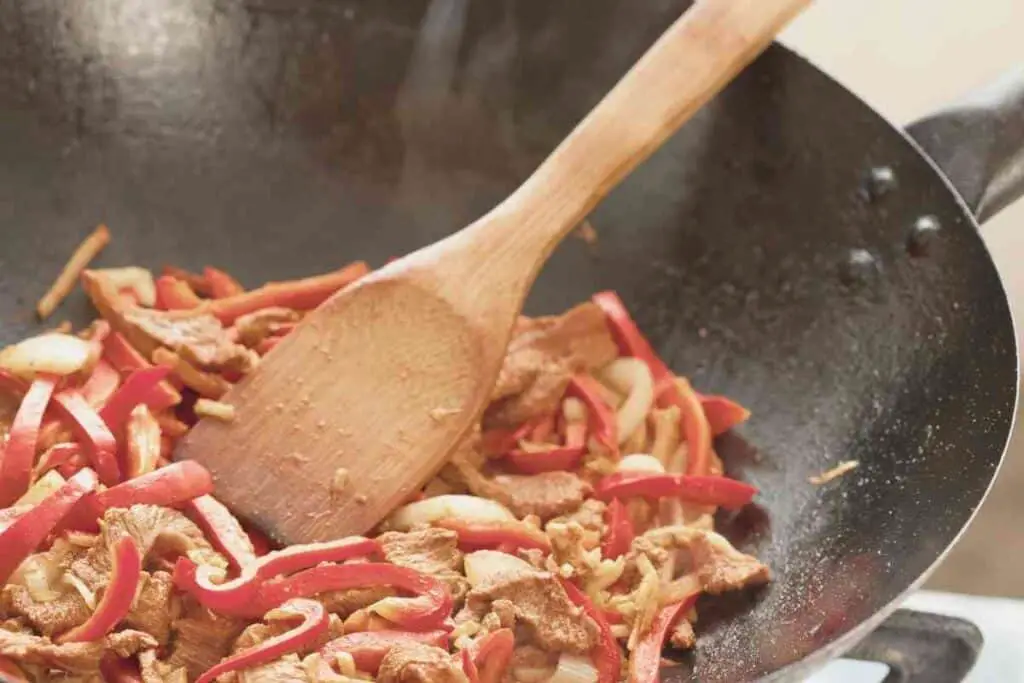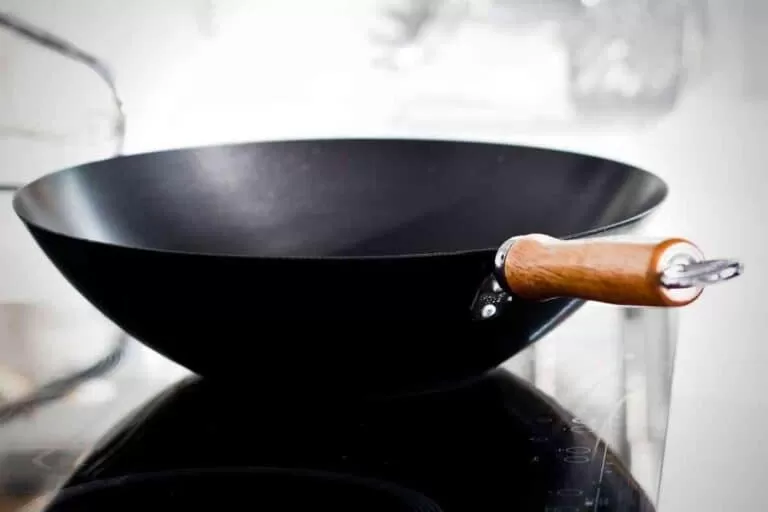How to Cook in a Wok?
There are several important factors to consider when cooking in a wok. The first is the type of food you’re cooking.
While most vegetables and proteins will cook in just a few minutes, some take longer than others. For instance, broccoli will take longer to cook than spinach.
The average cooking time for most vegetables is one to seven minutes. Another important factor is near-constant supervision.
If you’re cooking with spices, they should be added a minute or two before they finish.

Why Cooking in Wok Matters?
Several factors contribute to the unique flavor of stir-fried food cooked in a wok. In addition to the high heat, stir-frying creates a constant motion that causes the food to cook fast and even.
This results in the uniform browning of proteins. It also allows vegetables to retain their vivid color and fresh crunch, which contributes to the flavor.
The high heat and constant motion also cause the moisture in the food to evaporate rapidly, which in turn creates new savory compounds and enhances the flavor of existing ingredients.
Using a wok reduces the risk of food spoilage. Compared to a traditional frying pan, a wok is versatile, capable of performing all types of cooking.
It uses less oil and allows you to cook food more quicker. The cooking process also ensures that nutrients remain intact in the food.
See Also: Can You Use A Wok On A Glass Top Stove
Cooking in Wok – How to Do It?
One of the most important rules for cooking in a wok is to chop and slice your ingredients into uniform pieces before adding them.
This will help prevent uneven cooking, as the stir-frying process is quick and takes place on high heat. You should also never fill the wok more than two-thirds full.
Using the right oil is essential when cooking in a wok. You should use high-smoke oil and not vegetable oil or sesame oil. The order of ingredients is also important.
What Are Wok Cooking Techniques?
The wok is a versatile kitchen tool. Its round bottom and steep sides make it easy to move food around.
It also evenly distributes heat, resulting in faster cooking times. This makes it perfect for stir-fries. And because it is nonstick, food does not stick to it.
The first step is to create a slurry of velvet protein for stir-frying. You can use cornstarch or vegetable oil for this.
You can also add an egg white if you want a thicker coating. Then, you can stir-fry your meat in the mixture.
While cooking in a wok, it’s important to remember that heat transfer is not the same in all woks. Some woks have flat bottoms, which is better for electric cookers.
Alternatively, you can use a traditional round-bottomed wok with a gas flame. Either way, a Chinese carbon steel wok will heat up quickly and cool down quickly.
See Also: How To Season A Wok Carbon Steel
How to Prepare a Wok for the First Time?
Before you begin cooking with your wok, it is important to set the right temperature.
To do this, turn the burner to the highest setting and wait 30 seconds before trying to stir-fry.
After that, put two tablespoons of oil into the wok. Next, add sliced ginger, garlic, and scallions to the wok and stir-fry for 1-2 seconds.
Then, add your ingredients and stir-fry them thoroughly.
After cooking in the wok for the first time, you should repeat steps six and seven every few times.
This will remove seasoning and chili oil quickly. This step will also help your wok develop a patina over time.
With regular use, you’ll soon be cooking with a nice and seasoned wok without the need for step 8.
Benefits of Wok Cooking
One of the best ways to prepare a tasty stir-fry is to use a wok. A wok has a high heat, and stir-frying requires control over the heat.
Place the wok close to the stove to make stir-frying as easy as possible. To begin, heat the wok over medium-high heat for about two minutes.
Coat it with two tablespoons of oil. Add the aromatics and stir-fry until they become translucent.
Another benefit of cooking in a wok is that it distributes heat more effectively.
As a result, it reduces the chance of food spoilage. Moreover, it is more versatile than a traditional stir-fry pan and can be used for various other types of cooking.
A wok can do all the tasks of a traditional frying pan and even more! Besides, a wok requires less oil than a conventional frying pan. In addition, it cooks food faster and preserves more nutrients.





